
Radiation Oncology Journal
Scope & Guideline
Unveiling breakthroughs in therapeutic radiology for a healthier tomorrow.
Introduction
Aims and Scopes
- Radiation Therapy Techniques and Innovations:
The journal emphasizes the development and evaluation of various radiation therapy techniques, including hypofractionation, stereotactic body radiotherapy, and brachytherapy, fostering advancements in treatment protocols. - Clinical Outcomes and Efficacy Studies:
A core focus is on clinical studies that assess the outcomes and efficacy of radiation therapy across different cancer types, exploring survival rates, toxicity profiles, and patient quality of life. - Integration of Technology in Radiation Oncology:
The journal highlights the role of emerging technologies such as radiomics, AI, and adaptive radiation therapy, aiming to enhance precision in treatment planning and delivery. - Multidisciplinary Approaches in Cancer Treatment:
Research published often explores collaborative approaches involving surgery, chemotherapy, and immunotherapy, underscoring the importance of integrated treatment strategies in managing cancer. - Patient-Centric Research:
The journal prioritizes studies that consider patient experiences, psychological impacts, and the role of patient-reported outcomes in radiation oncology.
Trending and Emerging
- Hypofractionated Radiation Therapy:
There is a significant increase in research exploring hypofractionated radiation therapy, particularly its efficacy and safety across various cancer types, indicating a paradigm shift in treatment protocols. - Integration of Artificial Intelligence and Radiomics:
The incorporation of AI and radiomics into radiation oncology is gaining traction, with studies focusing on predictive modeling and treatment personalization, showcasing the future of precision medicine. - Psychosocial Aspects of Cancer Treatment:
Recent studies emphasize the psychological impacts of radiation therapy on patients, exploring anxiety and quality of life, reflecting a broader understanding of patient care beyond clinical outcomes. - Adaptive Radiotherapy Techniques:
Emerging research on adaptive radiotherapy techniques highlights their role in addressing anatomical changes during treatment, aiming for improved accuracy and patient outcomes. - Combination Therapies with Immunotherapy:
The exploration of combining radiation therapy with immunotherapy is increasingly prominent, addressing the potential synergistic effects to enhance treatment efficacy and improve survival rates.
Declining or Waning
- Traditional Fractionation Schedules:
There seems to be a decline in studies focusing on conventional fractionation schedules as the field increasingly shifts towards hypofractionated and adaptive radiation therapies that offer improved outcomes. - Single Modality Treatments:
Research centered solely on radiation therapy without the integration of other treatment modalities is becoming less common, indicating a trend towards more comprehensive treatment strategies. - Basic Radiobiology Studies:
There is a noticeable reduction in the publication of basic radiobiology studies, as the journal emphasizes clinical applications and outcomes over fundamental research. - Palliative Care Focus:
While still relevant, the volume of papers specifically addressing palliative radiotherapy has diminished, possibly due to a growing emphasis on curative treatment approaches.
Similar Journals
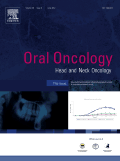
ORAL ONCOLOGY
Championing Excellence in Oral Cancer ScholarshipORAL ONCOLOGY is a leading peer-reviewed journal published by Elsevier, dedicated to advancing the field of oncology with a specific focus on oral diseases and cancers. Since its inception in 1996, this esteemed journal has provided a platform for high-quality research that addresses critical issues in oral surgery, cancer research, and related disciplines. With impressive rankings in Q1 in Oncology and Q1 in Oral Surgery, and recognized as Rank #1 in Dentistry and Oral Surgery by Scopus, ORAL ONCOLOGY consistently publishes impactful articles that contribute significantly to our understanding of oral cancers. The journal is committed to sharing pioneering findings that enhance clinical practices and improve patient outcomes. As a non-open access journal, it provides readers with exclusive access to cutting-edge research, ensuring that professionals, researchers, and students are at the forefront of developments in the field. Situated in the United Kingdom, ORAL ONCOLOGY serves as an indispensable resource for those dedicated to advancing oral health and oncology research through rigorous scientific inquiry and collaboration.
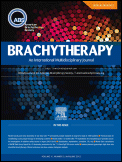
Brachytherapy
Advancing the Future of Cancer Treatment and Imaging.Brachytherapy, published by ELSEVIER SCIENCE INC, serves as a pivotal journal in the realms of Oncology and Radiology, Nuclear Medicine, and Imaging. With an ISSN of 1538-4721 and an E-ISSN of 1873-1449, the journal disseminates cutting-edge research and advancements from 2002 to 2024, focusing on the innovative field of brachytherapy. Although classified in the Q3 category for Oncology and Q2 for Radiology, Nuclear Medicine, and Imaging based on the 2023 quartile rankings, it continues to make significant contributions to clinical practice and methodology. Brachytherapy holds a respectable position in Scopus, ranking #155/333 and #234/404 in its respective categories, which reflects its importance and relevance to the scientific community. This journal is indispensable for researchers, healthcare professionals, and students looking to stay abreast of the latest techniques and therapeutic approaches in cancer treatment and imaging practices.
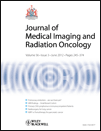
Journal of Medical Imaging and Radiation Oncology
Fostering Innovation in Imaging for Enhanced Cancer CareJournal of Medical Imaging and Radiation Oncology, published by WILEY, is a pivotal resource in the fields of oncology and medical imaging. With an impact factor reflective of its commitment to advancing research, the journal has maintained a robust reputation since its inception in 2008 and continues to thrive through 2024. It is indexed with an insightful ranking, with a Q2 classification in Radiology, Nuclear Medicine and Imaging, affirming its importance in these disciplines. This journal not only serves as an open access platform, allowing extensive reach and accessibility, but also fosters a scholarly community dedicated to the innovation of imaging techniques and radiation oncology practices. As a key player in disseminating crucial findings and advancements, it appeals to researchers, clinicians, and students who aim to contribute to the evolving landscape of medical imaging and cancer treatment methodologies. The journal is based in Australia, at 111 River St, Hoboken, NJ, and invites submissions that push the boundaries of current knowledge in this critical area of healthcare.
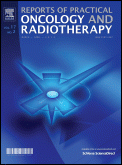
Reports of Practical Oncology and Radiotherapy
Connecting clinicians and researchers for impactful findings.Reports of Practical Oncology and Radiotherapy is a distinguished open-access journal dedicated to advancing the fields of oncology, radiotherapy, and cancer research. Published by VIA MEDICA since 2001, this journal serves as a critical platform for disseminating innovative research and practical findings that impact clinical practices and patient outcomes. With an emphasis on fostering collaboration and knowledge exchange among researchers, clinicians, and students, the journal has positioned itself within the Q3 and Q4 categories of renowned directories in oncology, radiology, and nuclear medicine as of 2023. Based in Gdansk, Poland, it provides unrestricted access to its articles, ensuring that crucial research reaches a wide audience. This dedication to open access reflects the journal's commitment to transparency and innovation in the fight against cancer, making it an invaluable resource in this vital field of study.
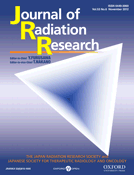
JOURNAL OF RADIATION RESEARCH
Connecting researchers to the latest in radiation science.JOURNAL OF RADIATION RESEARCH, published by Oxford University Press, is a prominent peer-reviewed journal focusing on the diverse fields of radiation science, including health, toxicology, and radiology. Since its inception in 1960, this open-access journal has provided a critical platform for the dissemination of high-quality research, making it accessible to a global audience of researchers, professionals, and students. With a consistent track record, the journal holds an impressive impact factor and is categorized in Q2 of Radiation studies and Q3 in Health and Toxicology as per the 2023 rankings, reflecting its influential role in shaping contemporary discourse in the field. The journal also boasts notable rankings within Scopus, further underscoring its importance in advancing knowledge and innovations related to radiation. Spanning from 1960 to 2024, the JOURNAL OF RADIATION RESEARCH remains at the forefront of scientific exploration and is essential reading for anyone committed to advancing the understanding of radiation and its effects.
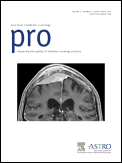
Practical Radiation Oncology
Advancing the Frontiers of Radiation OncologyPractical Radiation Oncology is a premier journal published by Elsevier Science Inc., focusing on the critically important fields of Oncology and Radiology, Nuclear Medicine, and Imaging. With an ISSN of 1879-8500, this journal serves as an essential resource for professionals and researchers dedicated to advancing the practice and research of radiation oncology. Established in 2011 and continuing through 2024, it has quickly gained recognition, achieving a prestigious Q2 ranking in Oncology and an exceptional Q1 ranking in Radiology, Nuclear Medicine, and Imaging as of 2023. The journal, housed in New York, USA, provides a platform for innovative research and practical insights, aimed at enhancing therapeutic practices and improving patient outcomes. As part of its commitment to fostering scientific dialogue, it also features a range of articles, reviews, and clinical studies that cater to the diverse interests of its readers. Hard-copy availability combined with digital access ensures a broad reach for the latest advancements in the field.

Journal of the Egyptian National Cancer Institute
Pioneering research for a world free of cancer.Journal of the Egyptian National Cancer Institute, published by SPRINGER, serves as a vital platform for disseminating innovative research in the field of oncology and cancer research. With both ISSN 1110-0362 and E-ISSN 2589-0409, this Open Access journal has been committed to making significant contributions to the scientific community since its inception in 2005. Operating from its base in Egypt, it has established itself as an important resource for researchers, practitioners, and students alike, offering insights into contemporary issues and advancements in cancer care. Recognized in the 2023 category quartiles as Q3 in Cancer Research and Q3 in Oncology, the journal is positioned to impact the ongoing discourse in cancer treatment strategies and health policy. As it continues to publish peer-reviewed articles through available Open Access avenues, the Journal of the Egyptian National Cancer Institute remains dedicated to enhancing the knowledge base and collaborative efforts within the global cancer research community.

Physics & Imaging in Radiation Oncology
Bridging Physics and Oncology for Enhanced Treatment OutcomesPhysics & Imaging in Radiation Oncology is a premier journal dedicated to advancing the interdisciplinary field of radiation oncology through innovative research and imaging technologies. Published by Elsevier, this open-access journal has made its mark since its inception in 2017, ensuring that groundbreaking findings are accessible to a broad audience. With a strong focus on the integration of physics, imaging techniques, and oncology, the journal occupies esteemed positions in the academic landscape, ranking in the top quartile for Radiation and Radiology, Nuclear Medicine and Imaging as of 2023. The journal serves as a platform for researchers, professionals, and students to share insights and foster collaboration, ultimately improving patient outcomes through enhanced imaging and treatment modalities. Based in Ireland and operating from Radarweg 29, 1043 NX Amsterdam, Netherlands, the journal aims to bridge the gap between theoretical physics and practical applications in clinical settings.

Hepatoma Research
Advancing the Frontiers of Liver Cancer ResearchHepatoma Research is a pivotal academic journal dedicated to advancing the field of hepatology and oncology, published by OAE PUBLISHING INC. Launched in 2019, this open-access journal has quickly established itself as a valuable resource for researchers and professionals dedicated to the study of liver cancer and related disorders. With an ISSN of 2394-5079 and E-ISSN 2454-2520, it offers insightful research articles and reviews aimed at enhancing clinical practices and understanding the complexities surrounding hepatoma. The journal is ranked in the Q3 category for both hepatology and oncology as of 2023, reflecting its commitment to quality amidst a competitive landscape. With its Scopus rankings placing it at the 47th percentile in hepatology and the 39th percentile in oncology, Hepatoma Research continues to be a crucial platform for disseminating groundbreaking findings. This journal underscores the importance of collaborative research and encourages submissions that contribute to the global discourse on liver cancer treatment and management.

Radiation Oncology
Transforming cancer treatment with cutting-edge radiation studies.Radiation Oncology is a premier scholarly journal published by BMC, dedicated to advancing the field of oncology through innovative research and comprehensive reviews since its inception in 2005. With its Open Access model, the journal ensures that the latest findings in radiotherapy and cancer treatment are accessible to a global audience, fostering collaboration and knowledge sharing among researchers, clinicians, and healthcare professionals. The journal has garnered an impressive reputation with prestigious rankings, achieving Q1 status in Radiology, Nuclear Medicine and Imaging and Q2 in Oncology as of 2023, reflecting its significant impact on the scientific community. In the Scopus rankings, it stands proud at Rank #61 in Radiology, Nuclear Medicine and Imaging, placing it in the top 81st percentile, and Rank #112 in Oncology at the 72nd percentile. With a converged publication plan extending through 2024, Radiation Oncology remains a vital resource for those dedicated to enhancing cancer treatment methodologies and outcomes.